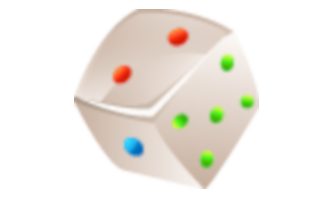Ratio
Mathematics, Grade 6
Ratio
Study Guide

Ratio
Flash Cards

Ratio
Quiz

Ratio
Worksheets

Ratio
Games

Study Guide Ratio Mathematics, Grade 6
❮
1
/
3
❯
RATIOS What are ratios? A ratio is a comparison of two numbers. The two numbers must have the same unit in order to be compared. Ratios can be written three ways, 4/5, 4:5 and 4 to 5. Ratios can be compared to other ratios as long as the units are the same. If one ratio is known and a similar ratio needs to be found, a proportion can be used. A proportion has the same units in both ratios. A proportion is used to find equal ratios. To solve a proportion, cross multiplication is used. It is very important that the correct units are lined up with a proportion in order to find the correct result. Similar figures also use proportions. Similar figures are figures that have the same angle measure although the lengths of their sides are different. A rate is a fraction in which the units are different. A familiar rate is miles per hour. In fraction form, it would be miles/hour. When buying items from a grocery store, a rate is used to determine which item would be a better buy. How to use ratios: • A ratio is used to compare items with the same unit. For example, if School A won 18 out of 24 games, the ratio of winning games to total games would be 3/4. To compare this to School B that won 36 out of 48 games, the ratio would have to be found. The ratio of winning games to total games for School B is also 3/4. Therefore both schools have the same ratio of winning games to total games. • A proportion is used when one ratio is known and only part of another ratio is known. There are 4 parts to a proportion and it can be solved when 3 of the 4 parts are known. © Copyright NewPath Learning. All Rights Reserved. Permission is granted for the purchaser to print copies for non-commercial educational purposes only. Visit us at www.NewPathLearning.com.
Example: 11 = 33 14 x? Since 11 is multiplied by 3 to get 33, 14 should be multiplied by 3 to find the answer of 42. • If the numbers in a proportion are too large to figure out mentally, cross multiplication should be used. With cross multiplication, two ratios are set up equal to each other with one piece of the proportion missing which will be called x. The numerator of the first ratio is multiplied by the denominator of the second ratio. It is set equal to the product of the denominator of the first ratio multiplied by the numerator of the second ratio. Then algebra is used to solve for x. Example: 18 = 45 18 · x = 27 · 45 27 x 18 · x = 1215 x = 67.5 • To solve similar figures, a proportion can also be used. It is important to make sure the proper sides of the figure match up with the proportion. Example: • Rates can be very useful in everyday life. A rate is a fraction with different units. If a rate of pay was $22 per hour, the amount of pay for 6 hours could be figured out. To get the total pay, multiply $22 by 6 hours to get the answer, $132. • Rates can be used to find the best buy at a grocery store. © Copyright NewPath Learning. All Rights Reserved. Permission is granted for the purchaser to print copies for non-commercial educational purposes only. Visit us at www.NewPathLearning.com.
Example: Cereal A is $3.49 for 13 ounces. Cereal B is $3.99 for 16 ounces. Which is the better buy? Cereal A $3.49 = .29/ ounce Cereal B $3.99 = .25/ ounce 13 oz. 16 oz. In this case, Cereal B is a better buy because it is cheaper per ounce. Try this! 1. Solve the ratio: 4/10 = 8/x 16/24 = 32/x 2. Solve the proportion by cross multiplication: 27/54 = 37/x 49/53 = x/137 3. Find the missing side in the similar figures: 4. Find the better buy: 5 pop bottles for $7 or 4 pop bottles for $6 © Copyright NewPath Learning. All Rights Reserved. Permission is granted for the purchaser to print copies for non-commercial educational purposes only. Visit us at www.NewPathLearning.com.
